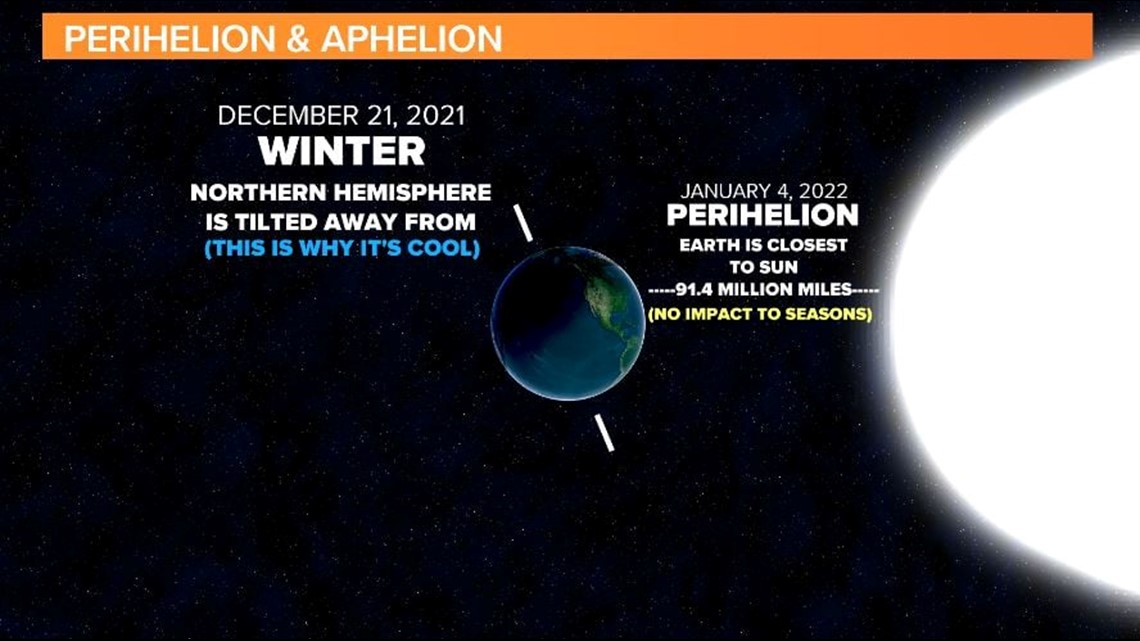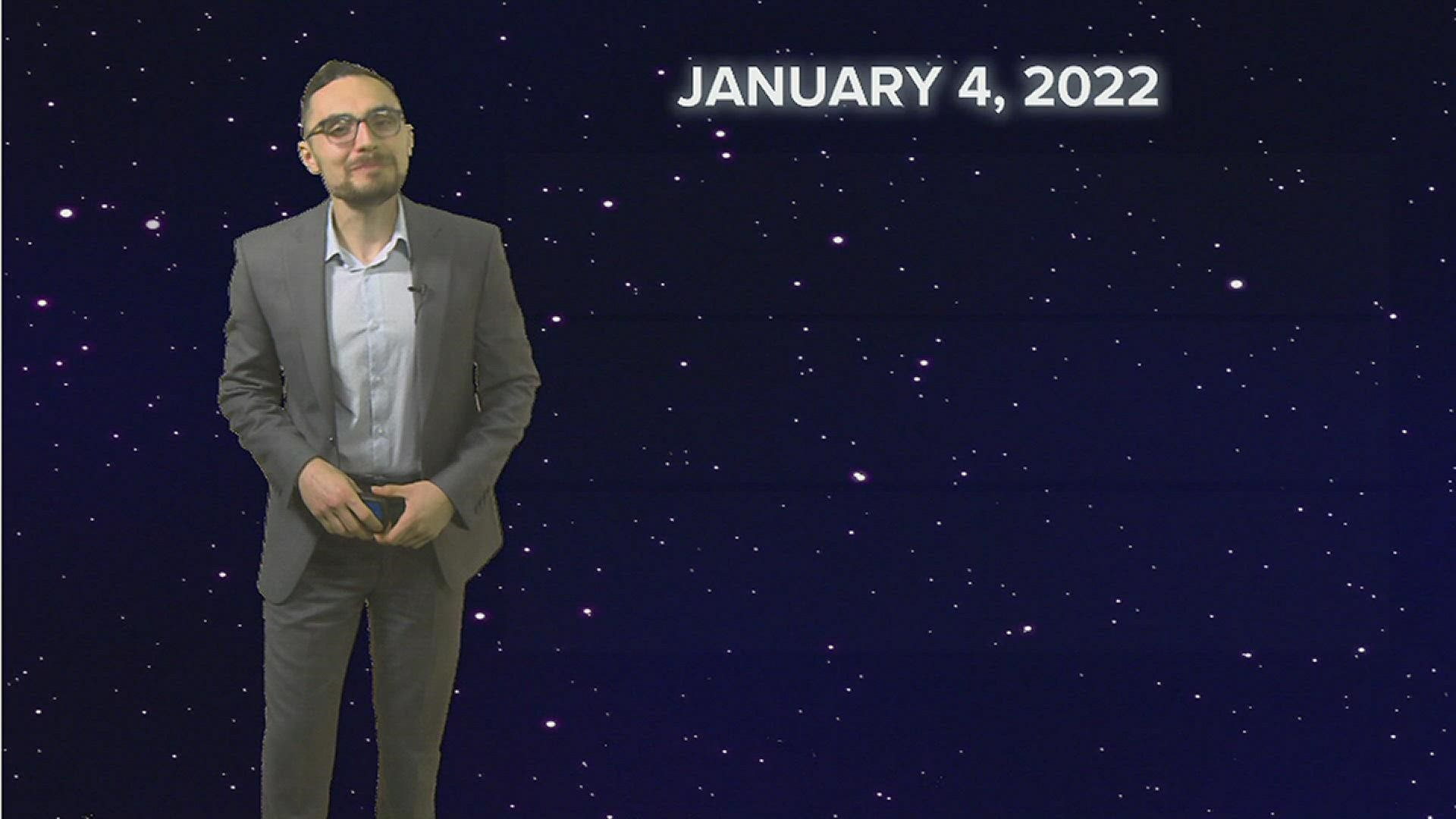COLUMBIA, S.C. — Winter's chill has finally returned to South Carolina after record warm weather over the holidays so it may come as a surprise to some that Earth is closer to the Sun now than any other time of the year.
Earth's orbit around the Sun is an ellipse so the distance from the brightest object in the Solar System varies throughout the year. An object's closest approach to the Sun is called perihelion, and the farthest distance is aphelion. During the first week of January, Earth is at it's perihelion and is 91.4 million miles away. In early July, Earth's aphelion, the Sun is 94.5 million miles away. That's more than a 4 million mile difference.
Perihelion and Aphelion have no direct impacts on our weather. The Sun drives all the weather on our planet and life wouldn't exist without it. A few million miles may sound like a big change, but even on the closest approach to the sun winter is still winter.
Our seasons are the result of Earth's tilted axis and in the wintertime, the arctic spends months without sunlight. The sun actually only rises once a year there, as we approach the spring equinox. Months of darkness during the winter months up north create a fresh supply of cold air for arctic intrusions throughout the winter across the United States and other temperate climates around the world.
If Earth didn't rotate on a tilt, then the season's wouldn't exist and Earth's temperature would be slightly warmer during Perihelion and cooler during Aphelion, but the change would be subtle. In reality, the global average temperature is cooler during Perihelion which occurs during the northern hemisphere winter and warmer during Aphelion during the Northern Hemisphere summer because the Northern Hemisphere has more continents which cool down and warm up faster than the vast oceans in the Southern Hemisphere.


This year's perihelion occurred on the morning of January 4th at 1:52 am ET. The date can vary by a day or 2 because of small discrepancies in our calendar keeping, but the event always falls in early January - at least for the next few hundred years. The date of Perihelion is slowly drifting closer to spring. A few thousand years ago, Perihelion occurred in late December for the Northern Hemisphere winter solstice and some astronomers estimate Perihelion will fall on the March Equinox in about 4,000 years.

